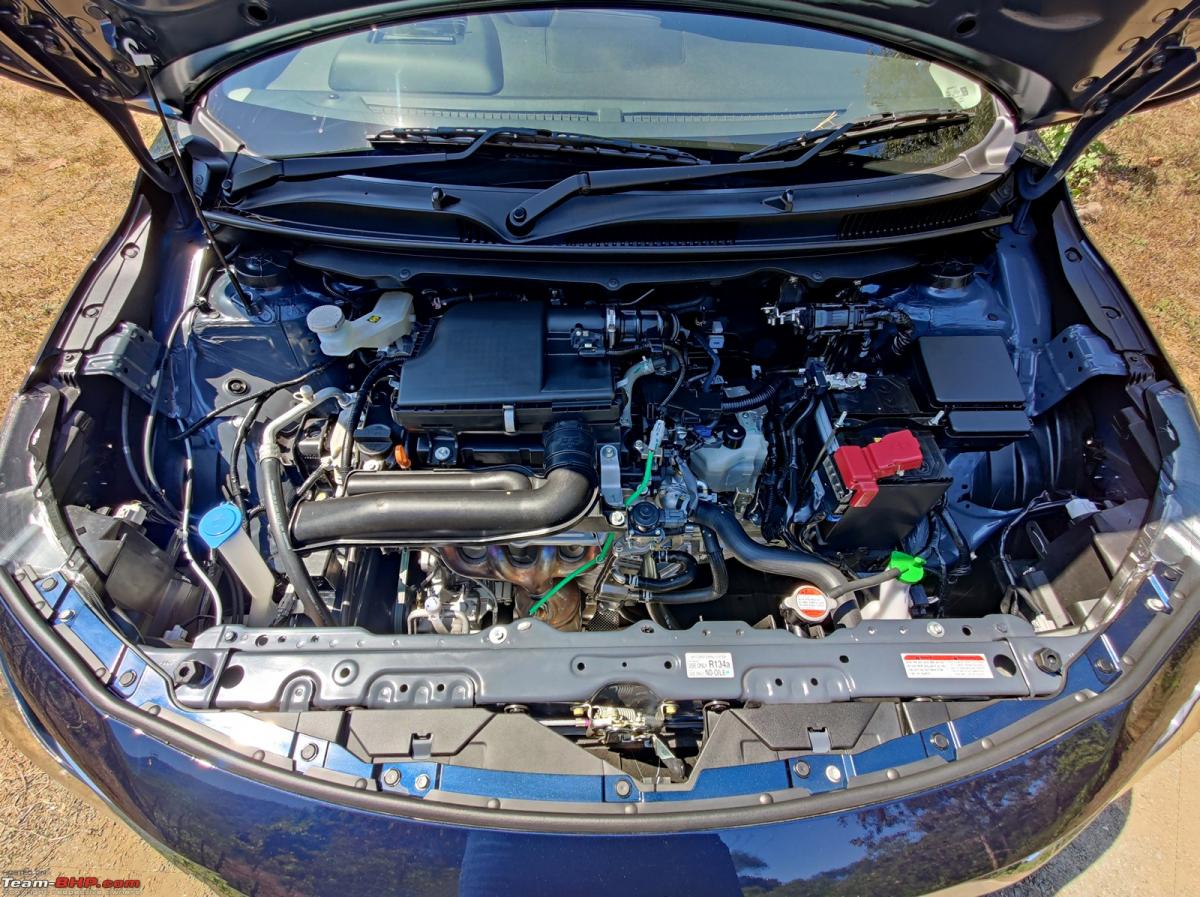News
2022 Maruti Baleno: Observations after 1 day of driving
Once the roads open up and you floor the accelerator, that’s where the K-Series engine shines. Being a 4-cylinder unit, it is smooth and loves to be revved to redline.
Driving the 1.2L Petrol MT
1.2L DualJet K-Series petrol engine is an updated version of the old engine. It now makes 89 BHP & 113 Nm:

The first thing I noticed when I got into the car was how silent and refined it is at idle. Of course, this is the newer version of the 1.2L K-Series. The old engine was a gem and this was to be expected. This car feels quieter than the old one and even its sibling, the Swift.
Starting off from a standstill is smooth. The clutch is very light and the anti-stall system is well tuned. Even with the additional 55 kg kerb weight, the DualJet engine feels peppy. While driving in city traffic, there is a decent amount of pep. Pottering around in the traffic, the anti-stall system and low-end torque ensure good drivability. I tried slotting int 5th gear at 30 km/h and the engine did not stall. Even at such low revs, there was no audible sign of the engine resisting or knocking. Of course, there is no power at such low revs though.
Once the roads open up and you floor the accelerator, that’s where the K-Series engine shines. Being a 4-cylinder unit, it is smooth and loves to be revved to redline. The only downer is that the mid-range could have been stronger. Maybe nowadays, we are just used to the surge of power we get with turbocharged petrols. Outright performance is good and engine excels when it is being pushed hard. That being said, the performance cannot match the i20's 1.0L turbo which produces much more horsepower.
The Baleno MT has an ARAI rating of 22.35 km/l, which is 0.95 km/l more than the old car's.
Bonnet gets insulation on the underside just like the older version:

Air-con compressor looks unusually small:

Finally, there is a plastic plate under the engine for protection:

Driving the 1.2L Petrol AMT
It is clear why Maruti has opted for the AMT instead of the mechanically superior CVT when you see the drop in prices of the automatic transmission equipped variants and the published fuel economy numbers. They surely know their market and what customers want. But, the enthusiast in me disagrees. The AMT does not offer as refined a driving experience as a conventional automatic transmission, be it a CVT, traditional torque convertor or dual clutch automatic.
AMTs have come a long way since their introduction. This AMT is surely way better tuned than the earliest AMTs. Compared to older AMTs the start off is smooth. The gearshift is well mated to the engine. Of course, with a single clutch, the shift times are typically AMT. Start off without any throttle input on a flat road and the car crawls forward gently. You can feel the slight mechanical judder of the clutch release. In the traffic the shift logic is well tuned - almost feels like a proper automatic as long as you keep the throttle input light. It surely offers the convenience of an automatic.
Middle level throttle and moderately aggressive driving is where the AMT and conventional automatic transmission gap starts to widen. For overtaking on undivided roads, I seriously recommend using the manual mode and choosing the right gear in advance. Try not to change gears in the middle of the maneuver, even if it means revving the engine to redline or holding a gear at higher revs, as the shifts take a long time. In D mode if you are driving hard, for the duration of gear change, there is a brief interruption in power. Maybe the engine hits the rev limiter first and then the gear shift happens. It is much smoother with slightly less throttle input and when gear changes happen below the redline.
The Baleno AMT has an ARAI rating of 22.94 km/l, which is better than the MT.
Suspension
Another major change in the updated Baleno is the new suspension. The suspension still is tuned on the softer side and at low speeds the ride is good. The overall cushioning is top class. I tried jumping a few sharp edged speed breakers and car cushioned the impact pretty well and stayed composed. At high speeds, there is not much up and down movement. There is no audible suspension noise in cabin, even when the car hits in deep potholes.
The Baleno's handling isn’t as sporty as that of the Swift. The car behaves like a bigger and more mature vehicle. Its high speed stability has improved a lot over the old car. It is only when you get into higher triple digit speeds that you realise it is a lightweight hatch and not a German sedan. However, at moderate and lower speeds, there is nothing to complain about. The change in suspension has clearly brought about a big change to the Baleno's ride and handling.
The steering is light and typically Maruti. The self-centering urge is not at all strong. It feels disconnected like most EPS units, but weighs up decently with speed.
Continue reading the discussion on the 2022 Maruti Baleno on our forum.
- Tags:
- Indian
- Maruti Suzuki
- Other
- Baleno
- Review



.jpg)
.jpg)














